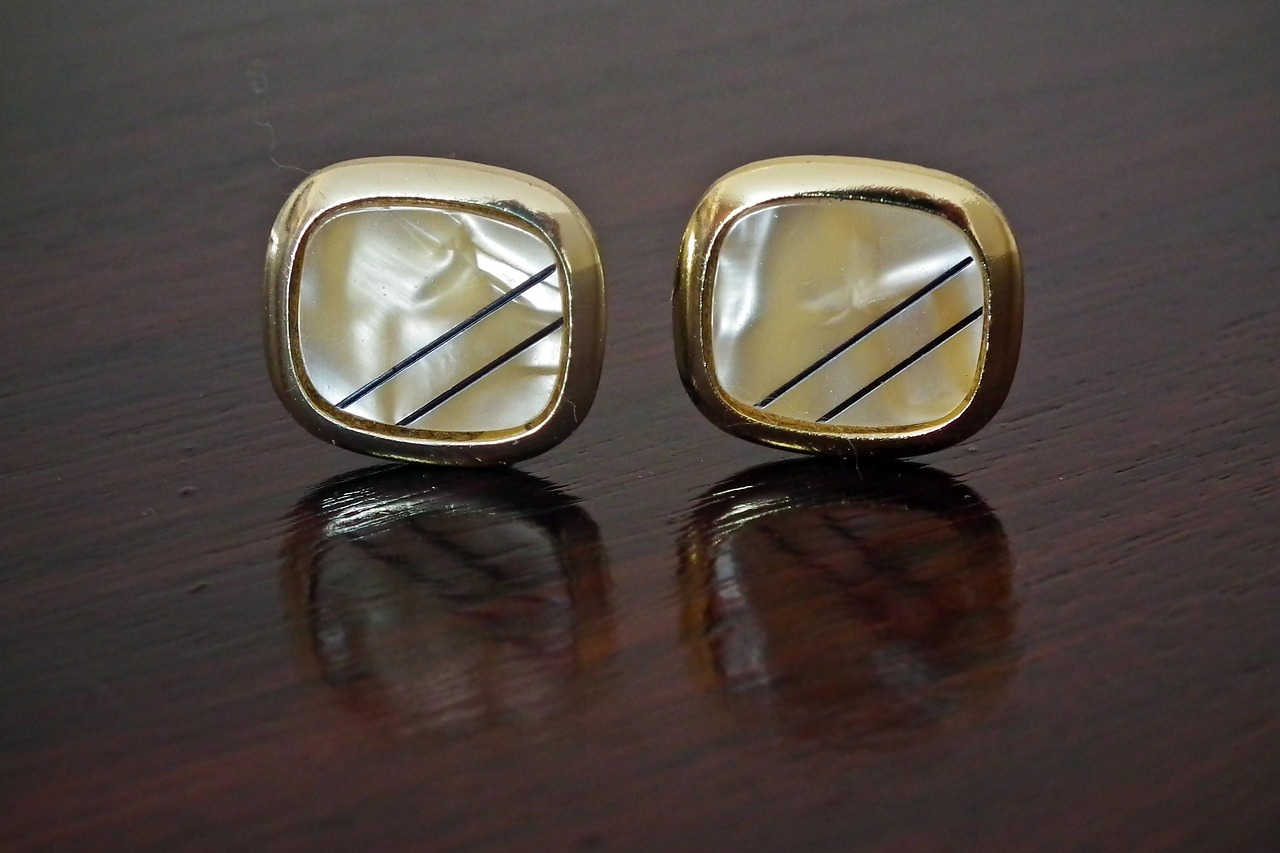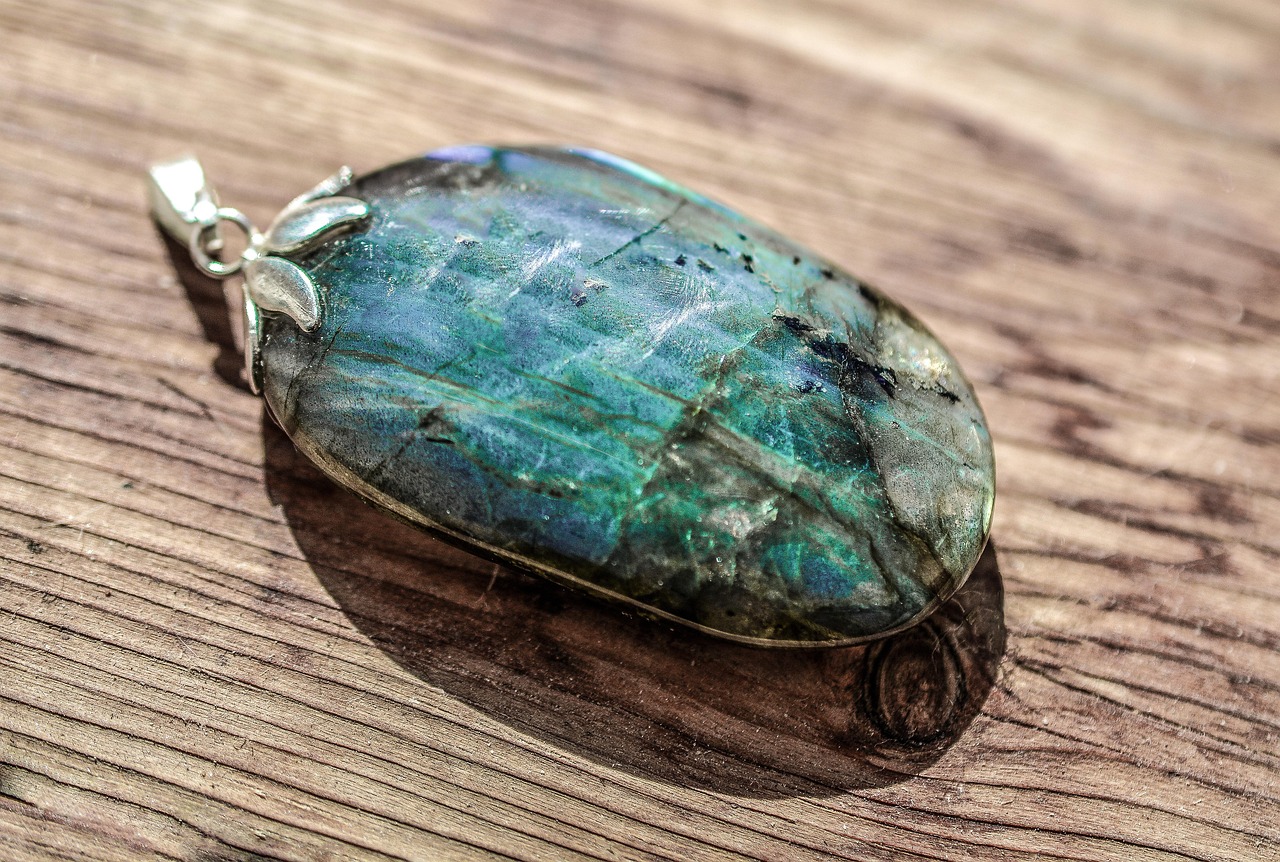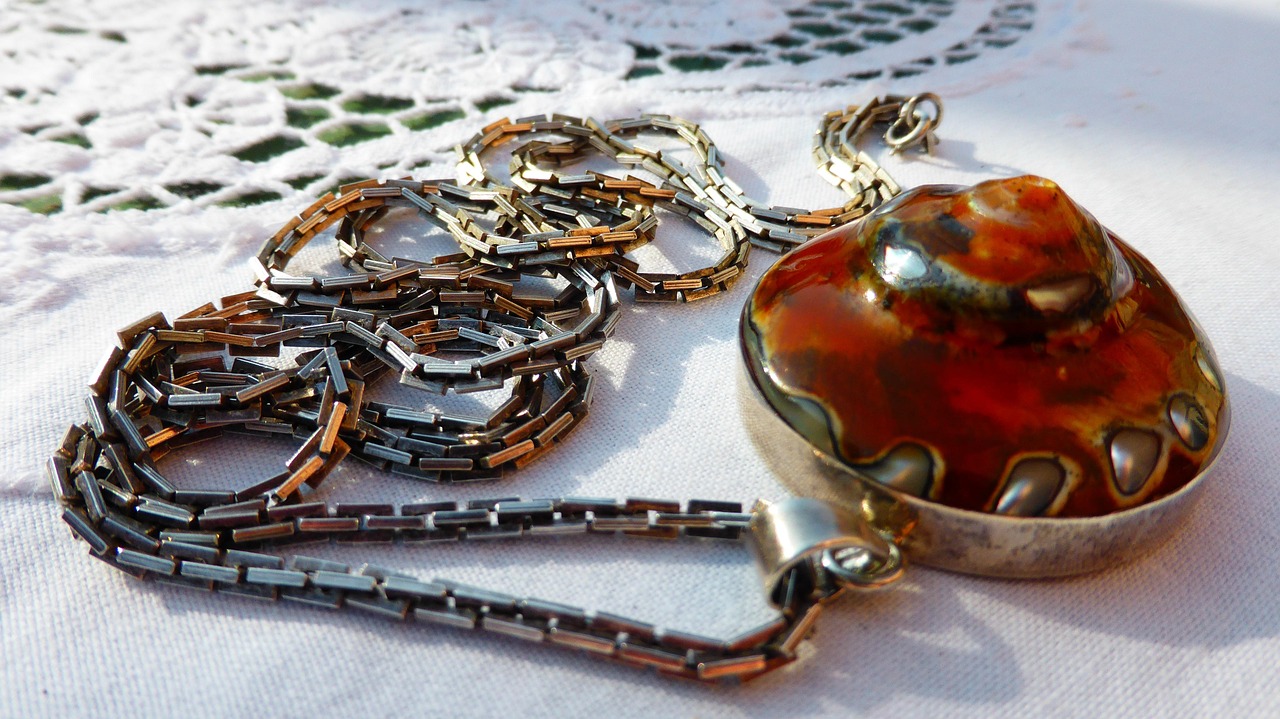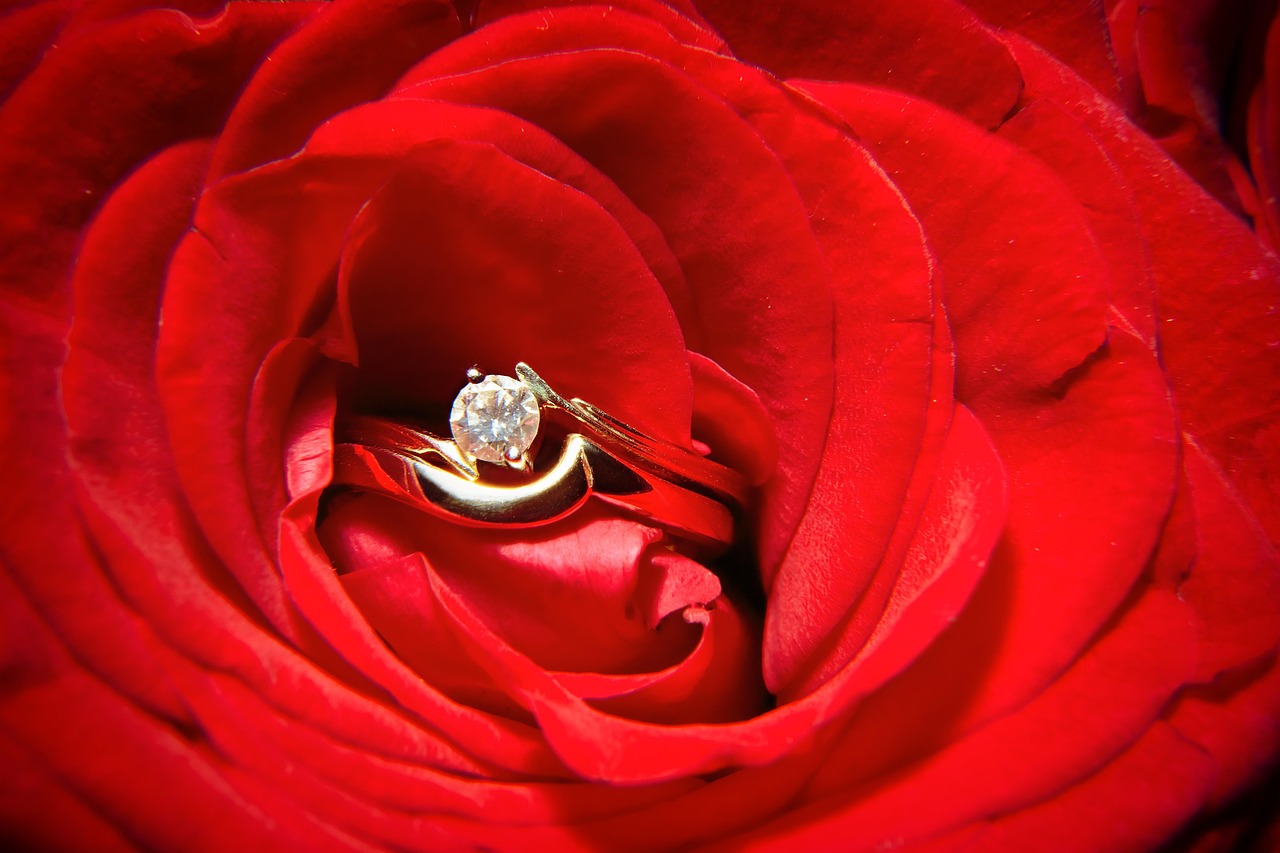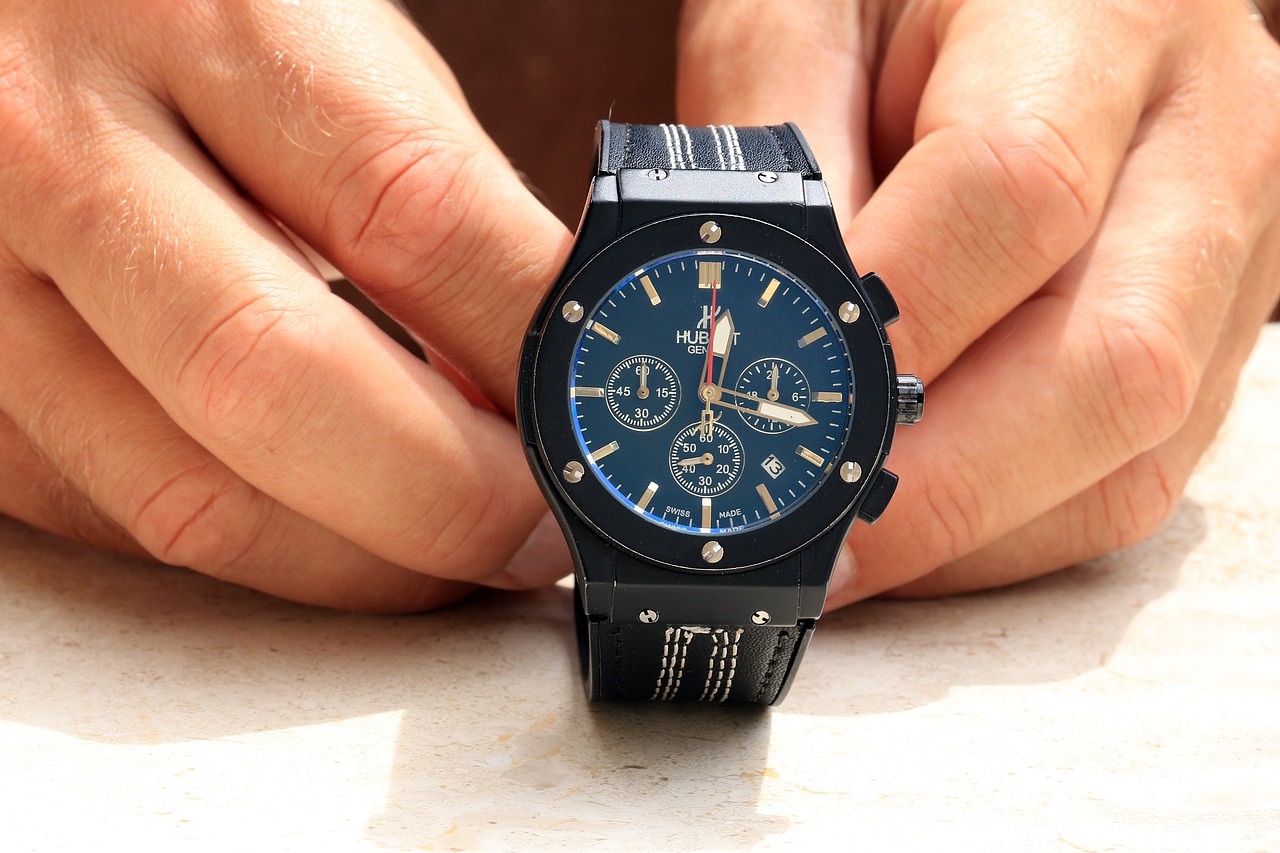The world of jewelry is evolving, with custom-made pieces gaining immense popularity among consumers seeking to express their unique style. This article delves into the reasons behind this trend, the benefits of custom jewelry, the design process, and how it caters to individual preferences and current trends.
The growing demand for personalized items has made custom-made jewelry a sought-after choice for consumers. It reflects individuality and unique style, allowing wearers to showcase their personal stories and tastes. Unlike mass-produced items, custom jewelry offers a level of exclusivity that appeals to those looking to stand out.
Selecting the right designer is crucial for achieving your vision. Factors such as experience, style, and customer reviews should guide your decision-making process. A good designer will not only understand your preferences but also bring their expertise to enhance your ideas.
- Diversity in Designs: Look for a range of styles that demonstrate the designer’s versatility.
- Quality Craftsmanship: Ensure that the pieces are well-made and exhibit attention to detail.
- Alignment with Personal Taste: The portfolio should resonate with your aesthetic preferences.
Customer feedback provides valuable insights into a designer’s reliability and craftsmanship. Positive reviews can indicate a designer’s ability to meet client expectations, while negative reviews may raise red flags.
Effective communication is vital in the design process. A designer should be attentive, responsive, and willing to collaborate closely with you to ensure your vision is realized.
Inquiring about the design process, materials, and timelines can clarify expectations and ensure a smooth collaboration. Essential questions include:
- What is your design process like?
- What materials do you recommend for my piece?
- What is the expected timeline for completion?
Understanding the materials available for custom jewelry can help you make informed choices that align with your aesthetic and budget. Popular choices include:
- Metals: Gold, silver, and platinum are favored for their durability and beauty.
- Gemstones: Consider factors like color, durability, and personal significance.
The design process for custom jewelry typically involves several stages, ensuring the piece meets your expectations. It usually begins with an initial consultation where you discuss your ideas and preferences.
During the consultation, you discuss your ideas, budget, and preferences with the designer, laying the groundwork for your custom piece. This stage is crucial for establishing a mutual understanding.
Designs are usually presented as sketches or digital renderings, allowing for adjustments and approvals before moving forward with production. This collaborative approach helps to ensure that the final piece aligns with your vision.
Custom jewelry offers numerous advantages, including personalization, quality craftsmanship, and the opportunity to create meaningful pieces that tell a story. It allows you to express your individuality in a way that mass-produced jewelry cannot.
Unlike mass-produced jewelry, custom pieces are tailored to your specifications, ensuring uniqueness and attention to detail. This level of personalization often results in a more meaningful and cherished item.
While some custom pieces may be pricier, they can also be more cost-effective in the long run due to their quality and timeless appeal. Investing in a custom piece means you’re less likely to need replacements or repairs.
Current trends in fashion and design significantly impact the aesthetics of custom jewelry. Designers are increasingly integrating eco-friendly materials and cultural motifs into their work, reflecting broader cultural movements and personal expressions.
Proper care is essential for maintaining the beauty and longevity of custom jewelry. Understanding best practices can help preserve your investment. Gentle cleaning methods, such as using a soft cloth and mild soap, can help keep your jewelry looking its best.
Storing jewelry in a cool, dry place, preferably in a fabric-lined box, can prevent scratches and tarnishing, ensuring your pieces remain in excellent condition. Proper storage is key to preserving the integrity of your custom creations.
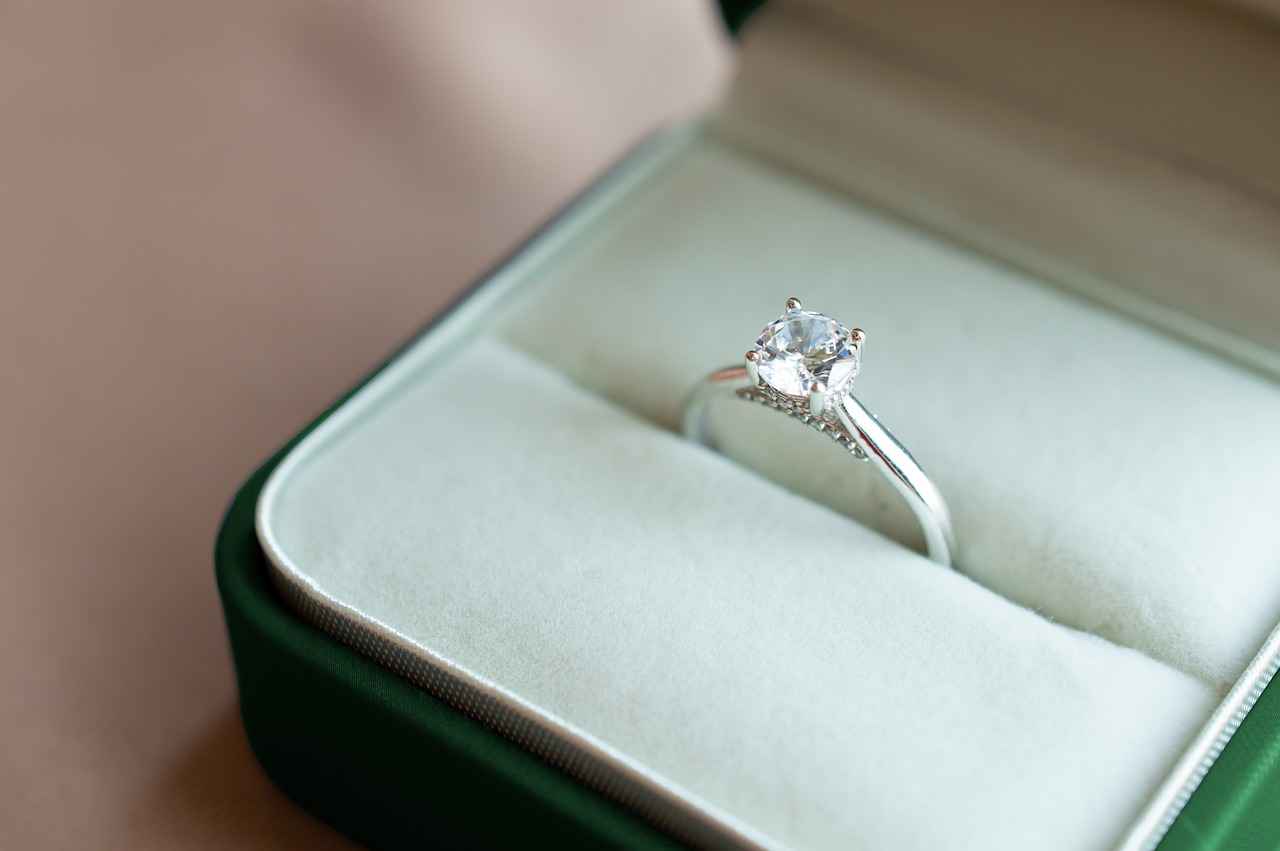
Why is Custom-Made Jewelry So Popular?
The allure of custom-made jewelry continues to rise, captivating consumers who seek to express their unique identity through personal adornments. One of the primary reasons for this popularity is the growing demand for personalized items that reflect individuality and style.
In a world increasingly dominated by mass production, people are turning to custom jewelry as a way to stand out. Unlike off-the-shelf pieces, custom jewelry allows for a tailored experience, where every detail can be adjusted to meet the wearer’s specific desires. This level of personalization not only enhances the emotional value of the piece but also creates a deeper connection between the jewelry and its owner.
- Individual Expression: Custom jewelry empowers individuals to showcase their personality. Whether it’s a unique design, a special engraving, or the choice of materials, each piece tells a story.
- Quality Over Quantity: Many consumers are shifting their focus from quantity to quality. Custom pieces are often crafted with superior materials and meticulous attention to detail, ensuring longevity and durability.
- Meaningful Connections: Custom jewelry often symbolizes significant moments, such as engagements, anniversaries, or personal achievements. This emotional resonance adds value that mass-produced items simply cannot offer.
The journey of creating custom jewelry typically begins with an initial consultation. During this phase, clients discuss their ideas, preferences, and budget with the designer. This collaborative approach ensures that the final piece aligns closely with the client’s vision.
Once ideas are exchanged, designers often provide sketches or digital renderings. This stage allows for adjustments and refinements before moving to production. The ability to visualize the piece before it is crafted is a significant advantage of choosing custom jewelry.
When it comes to materials, the options are vast. Popular choices include:
- Metals: Gold, silver, and platinum are favored for their durability and aesthetic appeal. Each metal offers a different look and feel, catering to various tastes.
- Gemstones: Selecting the right gemstones can enhance the emotional significance of the piece. Factors like color, durability, and personal meaning play a crucial role in this decision.
One of the most significant advantages of custom jewelry is its uniqueness. While mass-produced items are often made in bulk, custom pieces are designed specifically for the individual. This attention to detail ensures that each piece is not only unique but also tailored to the wearer’s specifications.
Moreover, custom jewelry often represents a better investment in the long run. Although some pieces may come with a higher initial price tag, their quality and personal significance can make them more valuable over time.
Current trends indicate a growing interest in sustainability and ethical practices. Many designers are now incorporating eco-friendly materials and ethically sourced gemstones into their creations. This shift not only appeals to environmentally conscious consumers but also reflects a broader cultural movement towards sustainability.
Additionally, cultural influences are becoming increasingly prevalent in custom jewelry designs. Many individuals seek to celebrate their heritage through motifs and symbols that hold personal significance. This trend allows for a rich tapestry of stories woven into each piece, making them even more special.
In conclusion, the rising popularity of custom-made jewelry is driven by a desire for individuality, quality, and meaningful connections. As consumers continue to seek personalized experiences, the custom jewelry market is poised for further growth, reflecting the unique stories of those who wear it.

How to Choose a Custom Jewelry Designer?
Choosing the right custom jewelry designer is a critical step in bringing your unique vision to life. With an array of options available, it can be daunting to find someone who aligns with your style and expectations. Here are some essential factors to consider when selecting a designer.
Experience plays a significant role in the quality and creativity of the designs. A designer with years of expertise is likely to have honed their skills and developed a keen understanding of various techniques and materials. Look for designers who have a proven track record in creating custom pieces similar to what you envision.
Your personal style should resonate with the designer’s aesthetic. Review their portfolio to see if their previous work aligns with your preferences. A designer who specializes in contemporary, vintage, or eclectic styles may enhance your vision. Ensure that their design philosophy matches your taste, as this will lead to a more satisfying collaboration.
Customer reviews are invaluable when assessing a designer’s reliability and quality. Look for testimonials that highlight the designer’s craftsmanship, communication skills, and ability to meet deadlines. Positive feedback from previous clients can provide reassurance that you are making the right choice.
During the initial consultation, expect to discuss your ideas, budget, and timeline. A good designer will ask insightful questions to understand your vision better. This is an opportunity for you to gauge their communication skills and willingness to collaborate. Make sure they listen attentively and provide constructive feedback.
A designer’s portfolio is a reflection of their skills and creativity. Look for a diverse range of designs that showcase their versatility and craftsmanship. High-quality images and detailed descriptions can give you a sense of their attention to detail and artistic style. Pay attention to how the designs resonate with your personal aesthetic.
- What is your design process?
- What materials do you recommend for my project?
- How long will the design and production take?
- Can you provide references from past clients?
Asking these questions will help clarify expectations and ensure that both you and the designer are on the same page.
Effective communication is essential throughout the design process. A designer should be responsive and willing to address any concerns or questions you may have. Their ability to communicate clearly and professionally will significantly impact your overall experience.
Understanding the costs associated with custom jewelry is crucial. Be upfront about your budget during the consultation. A reputable designer will provide a transparent breakdown of costs, including materials, labor, and any additional fees. This transparency will help you avoid surprises down the line.
In conclusion, selecting the right custom jewelry designer requires careful consideration of various factors, including experience, style, customer reviews, and communication skills. By taking the time to research and ask the right questions, you can find a designer who will help you create a stunning piece that reflects your unique vision.
What to Look for in a Designer’s Portfolio?
When embarking on the journey of creating custom jewelry, one of the most critical steps is selecting the right designer. A designer’s portfolio serves as a window into their creative abilities and craftsmanship. It is essential to evaluate this portfolio thoroughly to ensure that the designer aligns with your vision and expectations.
A designer’s portfolio should not only showcase their technical skills but also reflect their unique style and versatility. Here are key aspects to consider:
- Diversity of Designs: Look for a variety of styles and pieces in the portfolio. This diversity demonstrates the designer’s ability to adapt to different tastes and requirements.
- Quality of Craftsmanship: Examine the details in each piece. High-quality craftsmanship is evident through clean lines, precise settings, and overall durability.
- Personalization: Check if the designer has experience in creating personalized items. This is crucial for ensuring that your piece will be unique and tailored to your specifications.
- Use of Materials: Take note of the types of materials used in the showcased pieces. A good designer should be proficient in working with various metals and gemstones.
Understanding a designer’s aesthetic is vital for ensuring that their vision aligns with yours. Look for:
- Consistency: A strong portfolio will have a consistent style that reflects the designer’s signature look while still showcasing versatility.
- Innovation: Pay attention to how the designer incorporates current trends while maintaining a timeless appeal.
- Emotional Resonance: The best designs evoke emotions. Look for pieces that tell a story or have personal significance.
Customer feedback can provide invaluable insights into a designer’s reliability and skill. Look for:
- Positive Reviews: A designer with numerous positive reviews is likely to have a track record of satisfied clients.
- Detailed Testimonials: Reviews that discuss specific experiences can give you a clearer picture of what to expect.
- Before-and-After Examples: Some designers showcase transformations, which can highlight their ability to realize a client’s vision.
Engaging in a conversation with the designer can provide clarity and help you gauge their expertise. Consider asking:
- What is your design process? Understanding their approach can help you assess how closely they will work with you.
- What materials do you recommend for my project? This question opens the door for discussions about quality and durability.
- Can you provide references or examples of similar projects? This allows you to see their work in a context similar to your needs.
In conclusion, a designer’s portfolio is a crucial element in the selection process for custom jewelry. By focusing on diversity, craftsmanship, aesthetic alignment, and customer feedback, you can make an informed decision that ensures your custom piece is everything you envisioned and more.
Are Customer Reviews Important?
When it comes to selecting a custom jewelry designer, customer reviews play a pivotal role in guiding potential clients. These reviews offer a glimpse into a designer’s reliability and craftsmanship, which are critical factors in ensuring a satisfying experience. A designer’s ability to meet client expectations can often be gauged through the feedback provided by previous customers.
Customer feedback serves as a powerful tool for assessing the overall quality and service of a jewelry designer. Positive reviews can indicate not only a designer’s skill but also their commitment to client satisfaction. When potential clients read about others’ experiences, they can make informed decisions based on real-life testimonials. This aspect is particularly important in the custom jewelry industry, where personal connection and trust are essential.
- Quality of Work: A consistent stream of positive feedback often highlights the craftsmanship and attention to detail a designer brings to their creations.
- Reliability: Clients often mention whether their designer met deadlines and communicated effectively throughout the process.
- Client Relationships: Reviews that emphasize a designer’s ability to listen and incorporate client ideas indicate a strong collaborative spirit.
While reading reviews, it’s important to look for patterns rather than focusing on individual comments. A few negative reviews among a sea of positive ones may not be a cause for concern. However, if multiple clients express similar issues, it could signal a red flag. Pay attention to comments about:
- Communication style and responsiveness
- Adherence to budgets and timelines
- Overall satisfaction with the final product
Several platforms provide a wealth of information about jewelry designers. Websites like Yelp, Google Reviews, and specialized jewelry forums can offer insights into a designer’s reputation. Additionally, social media platforms often showcase customer testimonials and images of completed projects, allowing potential clients to see the designer’s work firsthand.
Once you’ve gathered a range of reviews, take the time to analyze them in the context of your own needs and preferences. Consider the following:
- Does the designer’s style resonate with your vision?
- Are there any recurring themes in the reviews that align with your priorities?
- What aspects of the feedback are most important to you—craftsmanship, communication, or creativity?
In summary, customer reviews are invaluable in the quest to find the right custom jewelry designer. They not only reflect the designer’s reliability and craftsmanship but also provide insights into how well they can meet client expectations. By carefully considering the feedback from previous clients, you can make a more informed decision that aligns with your vision for a unique piece of jewelry.
How to Assess Communication Skills?
Effective communication is a cornerstone of the custom jewelry design process. When embarking on a journey to create a unique piece, it is essential to collaborate with a designer who not only understands your vision but also values open dialogue. This ensures that the final product aligns with your expectations and desires.
First and foremost, a designer should be attentive to your ideas and feedback. This means actively listening to your preferences, whether they pertain to style, materials, or budget. A good designer will ask clarifying questions to ensure they fully grasp your concepts and aspirations. This level of attentiveness fosters a sense of trust and partnership, allowing you to feel comfortable expressing your thoughts throughout the design process.
In addition to being attentive, a designer must also be responsive. Timely communication is critical, especially when making decisions that affect the project timeline. A responsive designer keeps you informed about progress and any potential challenges that may arise. This transparency not only enhances the collaboration but also helps in managing expectations effectively. If a designer takes too long to reply or fails to address your queries, it may be a sign that they are not fully committed to your project.
Collaboration is another key element in assessing a designer’s communication skills. A designer should be willing to collaborate closely with you, valuing your input and incorporating it into the design. This partnership approach ensures that your voice is heard, and it empowers you to take an active role in the creative process. A designer who encourages your participation will likely produce a piece that feels genuinely personal and meaningful.
| Communication Skill | Importance |
|---|---|
| Attentiveness | Ensures understanding of your vision |
| Responsiveness | Maintains project momentum and trust |
| Collaboration | Empowers you in the design process |
Furthermore, consider asking potential designers specific questions during your initial consultations. Inquire about their approach to communication and how they handle feedback. For instance, you might ask:
- How do you prefer to communicate during the design process?
- What is your typical response time to messages?
- Can you provide examples of how you have incorporated client feedback in the past?
These questions can provide valuable insights into how well a designer aligns with your expectations regarding communication. Ultimately, a successful design experience hinges on a strong partnership built on effective communication. By prioritizing this aspect when selecting a designer, you can enhance the likelihood of creating a custom piece that truly reflects your personal style and story.
What Questions Should You Ask Your Designer?
When embarking on the journey of creating custom jewelry, asking the right questions can significantly influence the outcome of your piece. Engaging with your designer early in the process not only clarifies expectations but also fosters a collaborative atmosphere that is essential for a successful partnership. Here are some critical questions to consider:
- What is Your Design Process? Understanding the steps involved in the design process can help you gauge how your ideas will be transformed into a tangible piece. Inquire about the phases from initial sketches to the final product, and how you will be involved at each stage.
- What Materials Will Be Used? Discussing the materials is crucial, as they affect both the aesthetics and durability of your jewelry. Ask about the types of metals and gemstones available, as well as any alternatives that might suit your vision and budget.
- What is the Estimated Timeline? Timelines can vary significantly based on the complexity of the design and the materials involved. Clarifying the expected duration for each stage of the process helps set realistic expectations and ensures that you are on the same page regarding delivery dates.
- Can You Provide References or Samples of Previous Work? Reviewing a designer’s past projects can give you insight into their style and craftsmanship. Don’t hesitate to ask for references or to see examples that align with your vision.
- How Will You Communicate Throughout the Process? Effective communication is key to a successful collaboration. Ask how often you can expect updates and what methods will be used (e.g., email, phone calls, in-person meetings).
- What is Your Policy on Revisions? Inquire about how many revisions are included in the design process. Understanding this can help you feel more comfortable making adjustments as your ideas evolve.
- What is the Payment Structure? Clarifying the payment terms upfront can prevent misunderstandings later on. Ask about deposits, payment schedules, and any potential additional costs that may arise during the design process.
- Do You Offer Any Guarantees or Warranties? Knowing whether the designer offers guarantees on their work can provide peace of mind. Inquire about what happens if the piece does not meet your expectations or if there are issues after completion.
By asking these questions, you not only gain a deeper understanding of the designer’s approach but also create a foundation for a successful partnership. A well-informed client is more likely to achieve a piece that resonates with their personal style and meets their expectations.
As you engage with your designer, remember that the goal is to create a piece that reflects your individuality and tells your story. The more you communicate your vision, the better the final result will be. Custom jewelry is not just about adornment; it is about crafting a lasting memory that you will cherish for years to come.
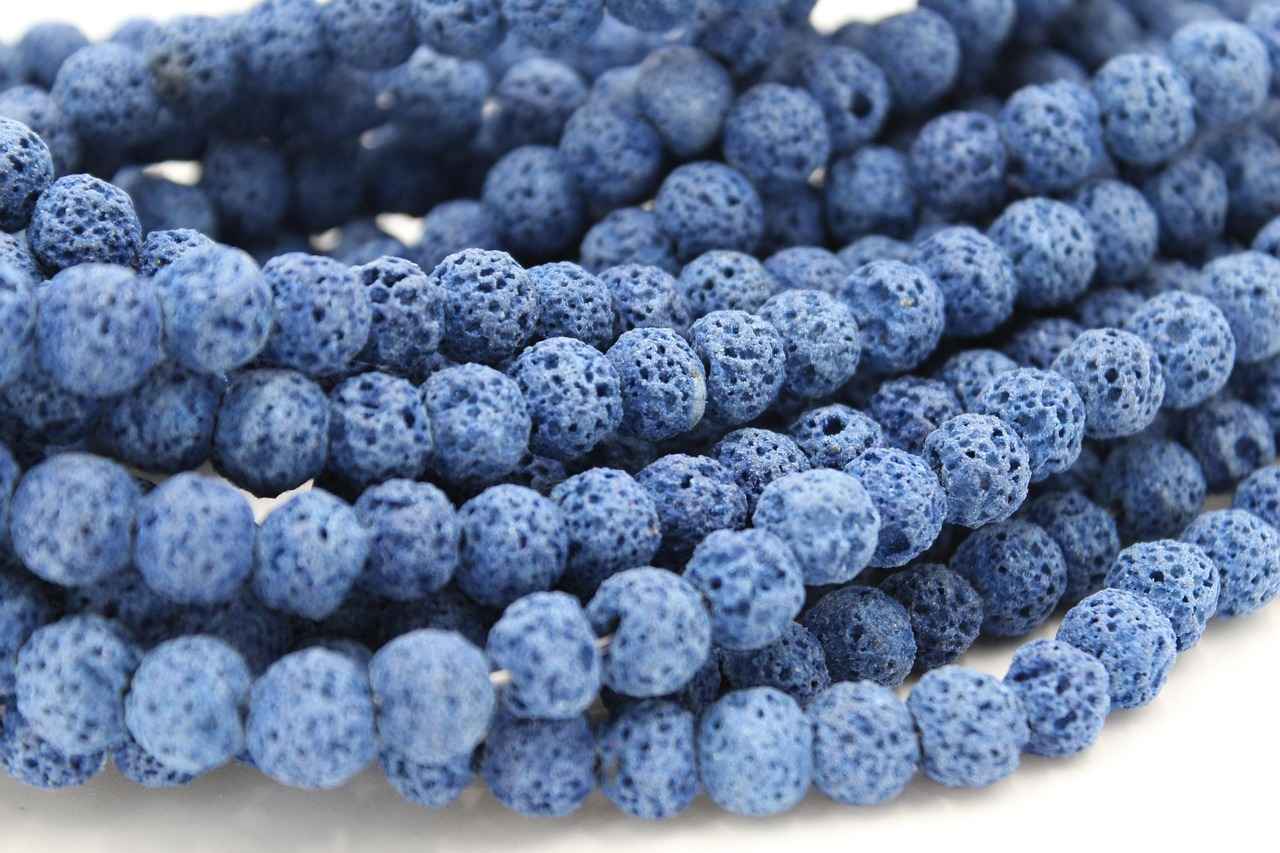
What Materials Are Commonly Used in Custom Jewelry?
When it comes to custom jewelry, understanding the materials available is essential for making informed choices that align with your aesthetic preferences and budget. The selection of materials not only influences the overall look of the piece but also its durability and value. This article will delve into the various materials commonly used in custom jewelry, providing insights that cater to both style and practicality.
Metals are the backbone of any jewelry piece, and choosing the right one is crucial. The most popular options include:
- Gold: Available in various karats and colors, including yellow, white, and rose, gold is renowned for its timeless appeal and versatility.
- Silver: Sterling silver is a cost-effective choice that offers a bright shine. However, it may tarnish over time, requiring regular maintenance.
- Platinum: Known for its durability and rarity, platinum is an excellent choice for high-end custom pieces, though it comes with a higher price tag.
Gemstones add character and emotional significance to custom jewelry. When selecting gemstones, consider:
- Durability: Harder stones like diamonds and sapphires are ideal for everyday wear, while softer stones may be better suited for occasional pieces.
- Color: Choose stones that resonate with your personal style. Birthstones or stones with special meanings can enhance the emotional value of your jewelry.
- Clarity: The clarity of a gemstone affects its overall appearance and value. Higher clarity stones are often more sought after.
In addition to traditional metals and gemstones, many designers are exploring alternative materials:
- Wood: Offers a unique, organic aesthetic that can be beautifully combined with metal accents.
- Resin: This versatile material allows for vibrant colors and creative designs, making it a popular choice for contemporary pieces.
- Recycled Materials: Eco-conscious consumers may prefer jewelry made from recycled metals and ethically sourced stones, aligning with sustainability values.
Custom jewelry is all about personal expression. The materials you choose should reflect your individual style and story. Here are some tips to help you personalize your piece:
- Incorporate Symbols: Consider using materials that hold special meanings, such as a family heirloom gemstone.
- Mix and Match: Don’t hesitate to combine different metals and materials to create a unique look that represents your personality.
- Consult with Your Designer: A skilled designer can help you navigate material options and suggest combinations that enhance your vision.
Your budget will significantly influence your material choices. While precious metals and high-quality gemstones can elevate a piece, there are ways to achieve a custom look without overspending:
- Prioritize: Decide which elements are most important to you—whether it’s the metal, gemstones, or intricate design.
- Set a Realistic Budget: Communicate your budget clearly with your designer to explore options that fit within your financial limits.
- Consider Alternatives: Explore less expensive materials that still offer a unique look, such as lab-created gemstones or alternative metals.
In conclusion, understanding the materials available for custom jewelry can drastically enhance your decision-making process. By considering your personal style, budget, and the unique qualities of each material, you can create a beautiful piece that truly reflects your individuality.
Which Metals Are Preferred for Custom Jewelry?
When it comes to custom jewelry, the choice of metal plays a crucial role in both the aesthetic appeal and the overall value of the piece. Different metals not only offer unique qualities but also cater to various personal preferences and budgets. Understanding the characteristics of popular metals can help you make an informed decision when designing your custom jewelry.
Gold is perhaps the most recognized and sought-after metal in the jewelry industry. Available in various karats, such as 10k, 14k, and 18k, gold offers a range of color options, including yellow, white, and rose gold. Each type has its unique appeal:
- Yellow Gold: A classic choice, known for its warm hue and traditional look.
- White Gold: Offers a modern appearance and is often plated with rhodium for added shine and durability.
- Rose Gold: Gaining popularity for its romantic blush tone, often associated with vintage designs.
Gold is not only durable but also resistant to tarnishing, making it a long-lasting option for custom jewelry.
Silver, particularly sterling silver, is another popular choice for custom jewelry. Composed of 92.5% silver and 7.5% other metals (usually copper), sterling silver is known for its bright luster and affordability. Here are some key points about silver:
- Affordability: Silver is generally more budget-friendly compared to gold and platinum, making it accessible for a wider audience.
- Tarnishing: While beautiful, silver can tarnish over time, requiring regular cleaning and maintenance to keep it looking its best.
- Versatility: Silver’s neutral tone makes it a versatile choice that pairs well with various gemstones and designs.
Platinum is often regarded as the most luxurious metal for custom jewelry. Known for its rarity and durability, platinum offers several advantages:
- Durability: Platinum is denser and more durable than gold and silver, making it an excellent choice for everyday wear.
- Hypoallergenic: Platinum is naturally hypoallergenic, making it ideal for those with sensitive skin.
- Investment Value: Due to its rarity and high demand, platinum often retains its value better than gold and silver.
In addition to gold, silver, and platinum, there are other metals worth considering for custom jewelry:
- Palladium: A member of the platinum family, palladium is lightweight and resistant to tarnishing.
- Titanium: Known for its strength and lightweight nature, titanium is a popular choice for modern designs and is also hypoallergenic.
- Copper: Often used in artisan jewelry, copper offers a warm tone and can be easily shaped into intricate designs.
In conclusion, the choice of metal for your custom jewelry is a significant decision that can impact the overall look, feel, and value of the piece. By understanding the unique qualities of each metal, you can select the one that best aligns with your personal style and budget, ensuring your custom jewelry is not only beautiful but also meaningful.
What Gemstones Should You Consider?
When it comes to selecting the perfect gemstone for your custom jewelry piece, several factors come into play. Understanding these factors can significantly enhance both the aesthetic appeal and the emotional value of your jewelry. Here are some key considerations:
One of the first aspects to consider is the durability of the gemstone. Different stones have varying levels of hardness, which is crucial for everyday wear. For instance, diamonds are renowned for their exceptional hardness, scoring a 10 on the Mohs scale, making them an excellent choice for rings and bracelets that will see frequent use. On the other hand, softer stones like opal or turquoise may be more prone to scratches and damage, making them better suited for pieces that are worn less frequently.
The color of a gemstone can evoke strong emotions and personal connections. Whether you prefer the deep blue of a sapphire or the vibrant green of an emerald, the color should resonate with your personality and style. Additionally, consider how the color complements your skin tone and wardrobe. Some people choose gemstones based on their birthstone or a color that holds special significance, adding a layer of personal meaning to their piece.
Beyond aesthetic appeal, the personal significance of a gemstone can greatly enhance its value. Many individuals select stones that symbolize important life events, such as anniversaries or milestones. For example, a couple might choose a gemstone that represents their wedding date or the birth of their child. This emotional connection transforms a beautiful piece of jewelry into a cherished heirloom, laden with memories and stories.
- Diamonds: Known for their brilliance and strength, they are timeless and versatile.
- Sapphires: Available in various colors, sapphires are durable and rich in history.
- Emeralds: Their vibrant green hue symbolizes rebirth and love, making them a popular choice for romantic gifts.
- Rubies: Representing passion and vitality, rubies are perfect for bold, statement pieces.
- Amethyst: Known for its calming properties, this purple stone is popular for both its beauty and meaning.
As consumers become increasingly aware of ethical sourcing, it’s essential to consider where your gemstones originate. Opting for ethically sourced stones not only supports sustainable practices but also adds an extra layer of meaning to your jewelry. Many designers now offer options for recycled materials and conflict-free gemstones, allowing you to create a piece that aligns with your values.
Finally, don’t hesitate to consult with your jewelry designer about your gemstone choices. They can provide valuable insights into the properties of different stones and help you make an informed decision that aligns with your vision. A skilled designer will work with you to ensure that your selected gemstone not only fits your aesthetic but also meets your lifestyle needs.
In summary, selecting the right gemstone for your custom jewelry involves a thoughtful consideration of durability, color, personal significance, and ethical sourcing. By taking the time to understand these factors, you can create a unique piece that truly reflects your individuality and emotional connection.
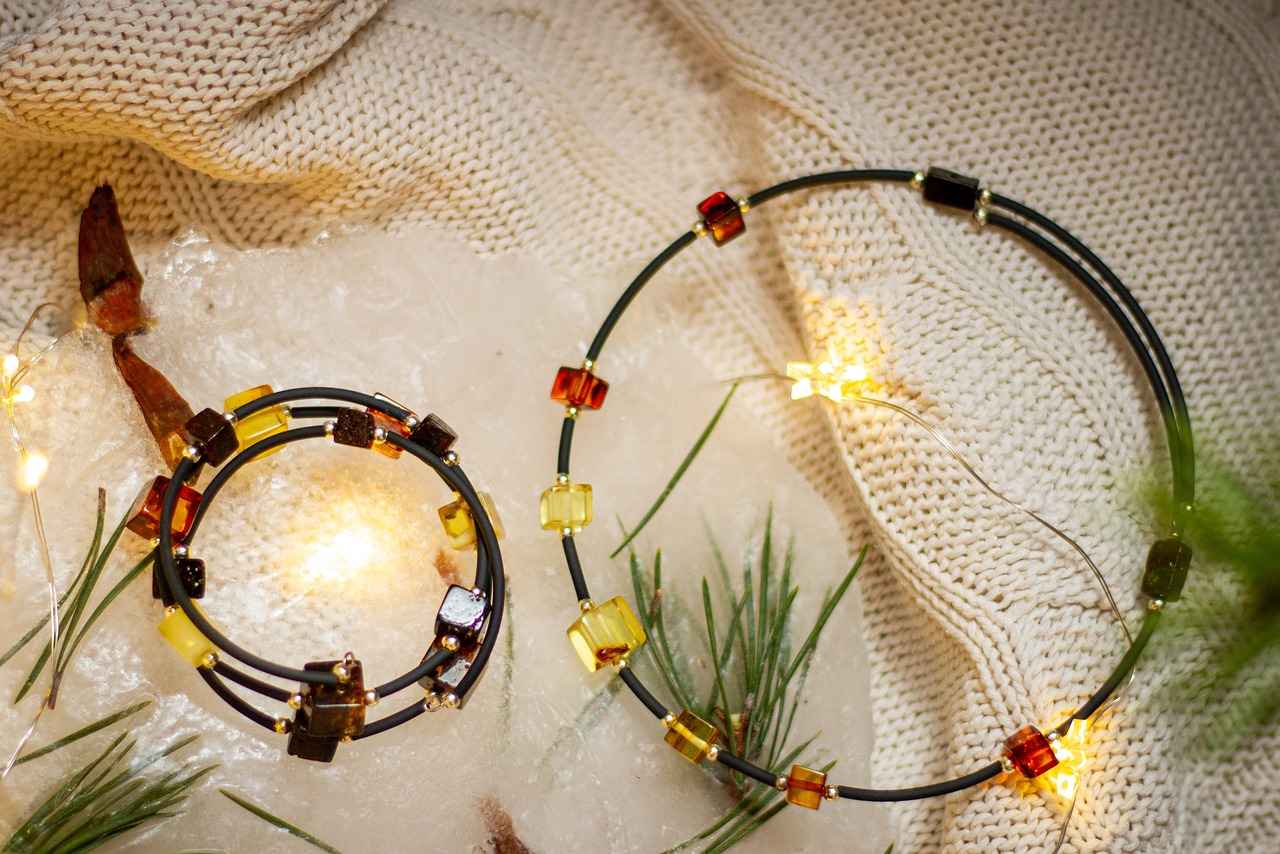
How Does the Design Process Work?
The journey of creating custom jewelry is an exciting and intricate process that allows for personal expression and creativity. Understanding how the design process works can enhance your experience and lead to a piece that truly reflects your style and vision.
The design process for custom jewelry typically involves several stages, ensuring that each piece is crafted to meet your specific expectations. It begins with a collaborative approach that allows your ideas to take shape in a tangible form.
During the initial consultation, you have the opportunity to discuss your ideas, preferences, and budget with your chosen designer. This is a crucial stage where you can express your vision, whether it’s a specific design, a particular gemstone, or a unique metal. The designer will ask questions to better understand your style and preferences, laying the groundwork for your custom piece.
Once your ideas are gathered, the designer will create initial sketches or digital renderings of the proposed design. This stage is essential as it allows for adjustments and refinements based on your feedback. You can request changes, ask for different materials, or even suggest additional elements to ensure the design aligns perfectly with your vision.
Material selection is a vital aspect of the design process. The designer will guide you through various options, including metals like gold, silver, and platinum, as well as a range of gemstones. Understanding the properties of each material helps you make informed choices that align with your aesthetic and budget. Durability, color, and personal significance are key factors to consider when selecting gemstones, enhancing the emotional value of your piece.
After finalizing the design, a prototype may be created. This model allows you to see a physical representation of your piece before production begins. It’s an excellent opportunity for you to evaluate the design, check the fit, and make any last-minute adjustments. Prototypes can be made from less expensive materials, giving you a clear idea of how the final piece will look and feel.
Once you approve the final design and prototype, the production phase begins. Skilled artisans will craft your jewelry piece with meticulous attention to detail. This stage involves various techniques, such as casting, soldering, and setting stones, depending on the complexity of the design. Communication remains essential throughout this phase to ensure that the piece is being crafted according to your specifications.
After the piece is completed, there may be a final fitting or adjustment stage. This ensures that the jewelry meets your expectations in terms of fit, comfort, and overall appearance. If any changes are needed, your designer will work with you to make those adjustments, ensuring that you leave with a piece that you absolutely love.
The timeline for the design process can vary significantly based on the complexity of the piece and the designer’s schedule. Generally, it can take anywhere from a few weeks to several months. It’s essential to discuss timelines during the initial consultation to set realistic expectations for your custom jewelry project.
By understanding the various stages of the design process, you can engage more effectively with your designer and ensure that your custom jewelry piece is a true reflection of your unique style and preferences.
What Happens During the Initial Consultation?
When considering a custom jewelry piece, the initial consultation is a pivotal step in the design process. This meeting serves as the foundation for your collaboration with the designer, ensuring that your vision is understood and translated into a tangible piece of art. During this session, you will have the opportunity to discuss your ideas, budget, and preferences, which are essential for creating a piece that reflects your unique style.
Firstly, it is important to come prepared with inspiration. Whether it’s a specific gemstone, a design style you admire, or a story behind the piece, sharing these insights helps the designer grasp your aesthetic. You might consider bringing pictures or even sketches to illustrate your thoughts. This visual aid can significantly enhance the designer’s understanding of what you envision.
Furthermore, discussing your budget upfront is crucial. Custom jewelry can vary widely in price based on materials, complexity, and the designer’s expertise. By establishing a clear budget, the designer can tailor their suggestions to fit within your financial parameters while still achieving your desired outcome. This transparency fosters a more efficient design process and helps avoid any potential misunderstandings later on.
Additionally, it’s essential to communicate any preferences you have regarding materials and styles. For example, if you prefer sustainable options, make sure to express this during the consultation. Many designers are now incorporating eco-friendly materials into their work, and your preferences can guide them in selecting the right components for your piece.
During the consultation, the designer may also ask you a series of questions to further refine your vision. These questions could include:
- What occasion is this piece intended for?
- Do you have a specific color palette in mind?
- What type of metal do you prefer?
- Are there any cultural or personal symbols you want to incorporate?
By answering these questions openly, you help the designer create a piece that is not only beautiful but also meaningful. This dialogue is critical as it allows you to express your style and ensures that the designer can bring your vision to life effectively.
Once all your ideas and preferences have been discussed, the designer will typically outline the next steps in the process. This may include creating initial sketches or digital renderings based on your conversation. These visuals will allow you to visualize the design and suggest any changes before production begins. This iterative approach ensures that the final piece aligns closely with your expectations.
In summary, the initial consultation is a collaborative and creative process. By engaging openly with your designer, sharing your inspirations, and discussing your budget and preferences, you set the stage for a successful custom jewelry experience. Remember, this is your piece, and ensuring that it reflects your individuality is the ultimate goal.
How Are Designs Finalized Before Production?
When embarking on the journey of creating custom jewelry, one of the most critical stages is the design finalization process. This phase is essential for ensuring that the final piece aligns perfectly with the client’s vision and expectations. Understanding how designs are finalized before production can empower clients to make informed decisions and enhance their overall experience.
Designs in custom jewelry are typically presented in two primary formats: sketches and digital renderings. These representations serve as visual guides, allowing clients to see how their ideas and concepts translate into tangible designs. Here’s a breakdown of the steps involved in this crucial phase:
- Initial Sketches: After the initial consultation, designers create rough sketches that capture the essence of the discussed ideas. These sketches are often basic and focus on the overall shape and style of the piece.
- Digital Renderings: Once the initial sketches are approved, designers may produce digital renderings using specialized software. This stage allows for more detailed visualization, including color, texture, and the interplay of materials.
- Client Feedback: At this point, client feedback is invaluable. Clients are encouraged to express their thoughts on the designs, suggesting any modifications or adjustments they feel necessary.
- Revisions: Designers typically offer several rounds of revisions based on client feedback. This collaborative process ensures that every detail aligns with the client’s vision.
- Final Approval: Once all adjustments have been made, the final design is presented for approval. This step is crucial as it marks the transition from design to production.
Throughout this process, effective communication between the client and the designer is paramount. A designer who actively listens and responds to feedback can significantly enhance the final outcome. Clients should feel comfortable asking questions and requesting changes to ensure that the design truly reflects their personal style and preferences.
Sketches and digital renderings serve several important functions in the design process:
- Visualization: They provide a clear visual representation of the concept, making it easier for clients to understand how their ideas will manifest in the final product.
- Flexibility: These formats allow for easy modifications, enabling clients to make adjustments without the need for extensive rework.
- Clarification: They help clarify any potential misunderstandings regarding the design, ensuring that both parties are aligned before moving forward.
As clients engage in the design finalization process, there are several key considerations to keep in mind:
- Be Open to Suggestions: Designers often bring valuable insights and expertise to the table. Being open to their suggestions can lead to innovative design enhancements.
- Communicate Clearly: Clear communication about preferences, budget, and any specific requirements is essential for achieving the desired outcome.
- Trust the Process: Custom jewelry design is a collaborative journey that requires patience. Trusting the designer’s process can lead to a more satisfying final product.
In conclusion, the design finalization phase is a pivotal part of creating custom jewelry. By understanding the importance of sketches and digital renderings, clients can actively participate in shaping their unique pieces. This collaborative approach not only enhances the final product but also enriches the overall experience of commissioning custom jewelry.
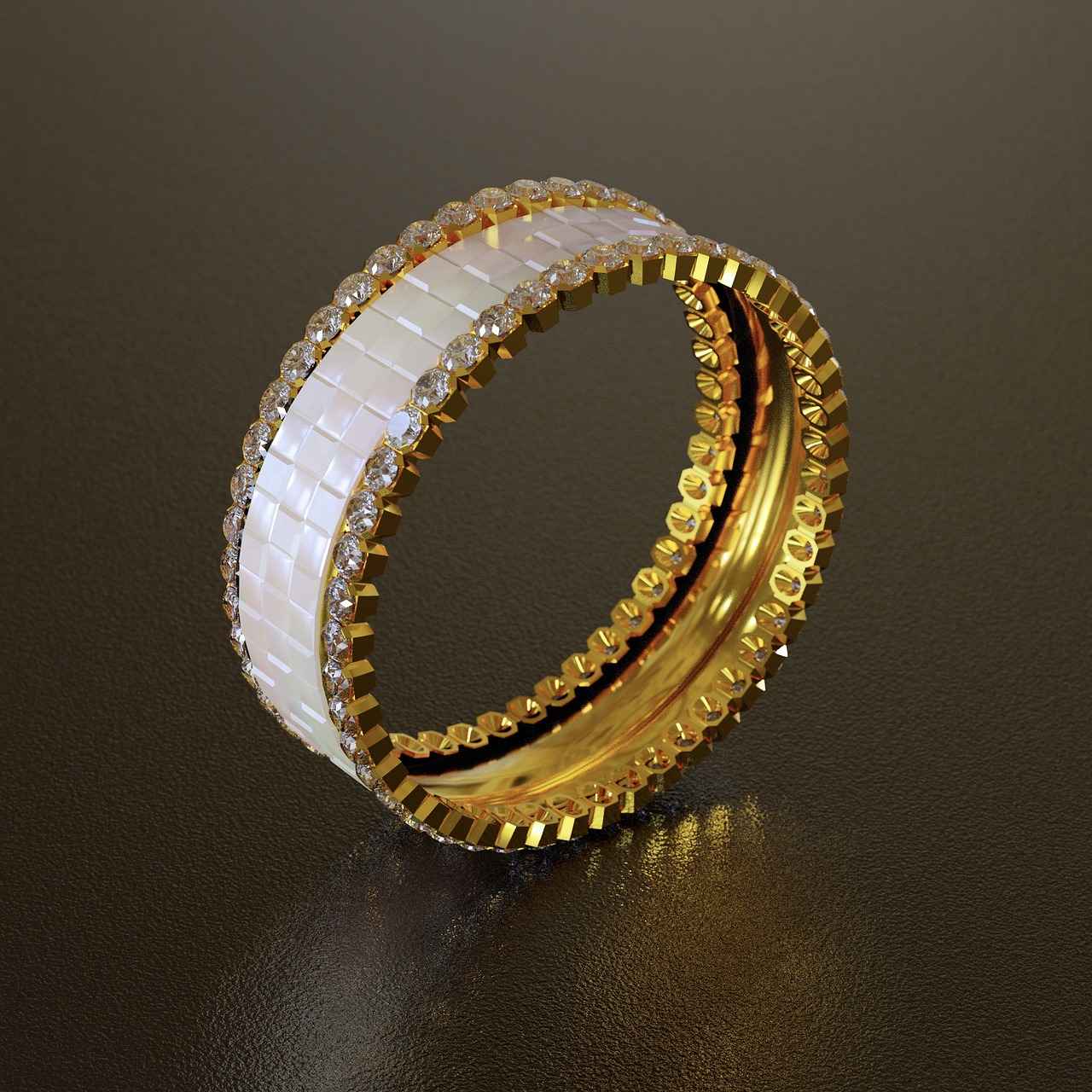
What Are the Benefits of Choosing Custom Jewelry?
Custom jewelry has become a popular choice for many individuals seeking to express their unique style and personality. The benefits of choosing custom jewelry extend beyond mere aesthetics; they encompass a range of factors that make these pieces truly special. Below, we explore the significant advantages of opting for custom-made jewelry.
One of the most appealing aspects of custom jewelry is the personalization it offers. Unlike mass-produced items, custom pieces allow you to choose every detail, from the type of metal to the design elements. This level of customization ensures that your jewelry is a true reflection of your personality, style, and values. You can incorporate meaningful symbols, initials, or gemstones that hold personal significance, making the piece uniquely yours.
When you choose custom jewelry, you are often investing in quality craftsmanship. Skilled artisans take the time to create each piece with care and precision, using high-quality materials. This attention to detail results in jewelry that not only looks beautiful but also stands the test of time. Unlike mass-produced options, which may compromise on quality, custom jewelry is designed to be durable and enduring.
Custom jewelry provides the opportunity to create meaningful pieces that tell a story. Whether it’s a piece commemorating a significant life event, a gift for a loved one, or a personal milestone, custom jewelry can encapsulate emotions and memories. Each time you wear your custom piece, it serves as a reminder of the story behind it, adding emotional value that mass-produced items simply cannot offer.
In a world where many people opt for similar styles and designs, custom jewelry allows you to stand out. With a bespoke piece, you can ensure that your jewelry is one-of-a-kind, setting you apart from the crowd. This uniqueness not only enhances your personal style but also makes for a great conversation starter.
Choosing custom jewelry often involves working closely with a designer. This collaboration allows you to share your ideas, preferences, and inspirations, ensuring that the final product aligns with your vision. The designer’s expertise can help refine your ideas, leading to a piece that exceeds your expectations. This partnership fosters a sense of ownership and satisfaction as you see your concept transformed into a tangible creation.
While custom jewelry may come with a higher initial price tag, it often represents a smart investment. High-quality, unique pieces tend to retain their value over time, and in some cases, may even appreciate. Unlike fast fashion jewelry, which can quickly go out of style, custom pieces are designed with timelessness in mind, ensuring they remain cherished for generations.
Many custom jewelry designers are increasingly adopting eco-friendly practices. This includes using recycled materials and ethically sourced gemstones, appealing to environmentally conscious consumers. By choosing custom jewelry, you can support sustainable practices while acquiring a piece that aligns with your values.
In summary, the benefits of choosing custom jewelry are numerous and significant. From personalization and quality craftsmanship to the ability to create meaningful pieces, custom jewelry offers a unique experience that mass-produced options cannot match. As you consider your next jewelry purchase, think about the advantages of going custom and how it can enhance your personal style and story.
How Does Custom Jewelry Compare to Mass-Produced Options?
The world of jewelry has evolved significantly, and the demand for custom-made pieces has surged in recent years. Unlike mass-produced jewelry, which often prioritizes quantity over quality, custom designs are tailored to your specifications, ensuring a level of uniqueness and attention to detail that mass-market items simply cannot match. This article delves into the distinct advantages of custom jewelry compared to its mass-produced counterparts.
One of the primary reasons consumers gravitate towards custom jewelry is the opportunity for personalization. When you choose custom-made pieces, you are not just purchasing jewelry; you are creating a reflection of your personality and style. Each piece can incorporate specific elements such as initials, birthstones, or meaningful symbols, making it truly one-of-a-kind. In contrast, mass-produced jewelry often lacks this personal touch, as it is designed to appeal to the general public rather than individual tastes.
Custom jewelry is typically crafted with a level of expertise and attention to detail that is hard to find in mass-produced options. Skilled artisans dedicate time and effort to ensure that every piece meets high standards of quality. This craftsmanship often results in jewelry that not only looks beautiful but is also durable and long-lasting. Mass-produced items, on the other hand, may prioritize speed and cost-efficiency, often sacrificing quality in the process.
In the realm of custom jewelry, the choice of materials is another significant factor that sets it apart from mass-produced items. Custom jewelers often offer a wide range of high-quality materials, including ethically sourced gemstones and recycled metals. This focus on sustainability appeals to environmentally conscious consumers who wish to make responsible purchasing decisions. Conversely, mass-produced jewelry may use lower-quality materials to keep production costs down, leading to pieces that may not stand the test of time.
Custom jewelry often carries a deeper emotional significance than mass-produced options. Each piece can tell a story, representing milestones, memories, or personal achievements. Whether it’s an engagement ring designed to symbolize love or a necklace commemorating a special occasion, custom jewelry allows you to infuse your creations with personal meaning. Mass-produced jewelry typically lacks this narrative depth, as it is designed to be generic and widely marketable.
While it is true that custom jewelry can sometimes come with a higher price tag, it is essential to consider it as an investment. The unique nature and quality craftsmanship of custom pieces often lead to a greater long-term value. Unlike mass-produced items that can quickly go out of style, custom jewelry can be timeless and cherished for generations. This potential for lasting value makes custom pieces a wise choice for those looking to invest in jewelry that will not only hold sentimental value but also monetary worth over time.
In summary, the choice between custom-made jewelry and mass-produced options is clear for many consumers. The benefits of personalization, quality craftsmanship, sustainable materials, emotional significance, and investment potential make custom jewelry a compelling choice. As the trend continues to grow, more individuals are recognizing the value of investing in pieces that truly reflect their unique stories and styles.
Can Custom Jewelry Be More Affordable?
When considering the world of jewelry, many people often wonder whether investing in custom pieces is a financially sound decision. The answer is not as straightforward as one might think. While it is true that some custom jewelry can come with a higher price tag, there are several compelling reasons why these pieces can prove to be more cost-effective in the long run.
Custom jewelry is not just about aesthetics; it is an investment in quality and personal expression. Unlike mass-produced items, custom pieces are crafted with attention to detail and can be made from higher-quality materials. This means they are often more durable and less likely to require repairs or replacements over time.
One of the most significant advantages of custom jewelry is its timeless appeal. Trends come and go, but a well-designed custom piece can transcend fashion fads. By choosing a design that resonates with your personal style and values, you create something that not only holds sentimental value but can also be passed down through generations. This longevity can make custom pieces a more economical choice in the long run, as you are less likely to need to replace them.
Investing in fewer, high-quality pieces often proves to be more economical than purchasing multiple lower-quality items. Custom jewelry allows you to focus on what you truly want and need, ensuring that each piece you acquire is meaningful and well-crafted. This focus on quality can lead to a more satisfying jewelry collection that requires less frequent updating.
Another factor to consider is the personalization aspect of custom jewelry. When you create a piece that reflects your unique story or style, it becomes more than just an accessory; it transforms into a cherished item that carries emotional significance. This personal connection can make the piece feel priceless, outweighing its initial cost.
Custom pieces, especially those made with precious metals and gemstones, can have a higher resale value compared to mass-produced jewelry. If you ever decide to sell your custom piece, the unique design and quality craftsmanship can attract buyers willing to pay a premium. This potential for resale adds another layer of financial wisdom to investing in custom jewelry.
In conclusion, while the upfront cost of custom jewelry may be higher than that of mass-produced alternatives, the long-term benefits can make it a more economical choice. From quality and durability to personalization and potential resale value, custom jewelry offers a unique combination of attributes that can lead to greater satisfaction and financial sense over time. Investing in custom pieces allows you to enjoy the beauty of jewelry while also making a wise financial decision for your future.
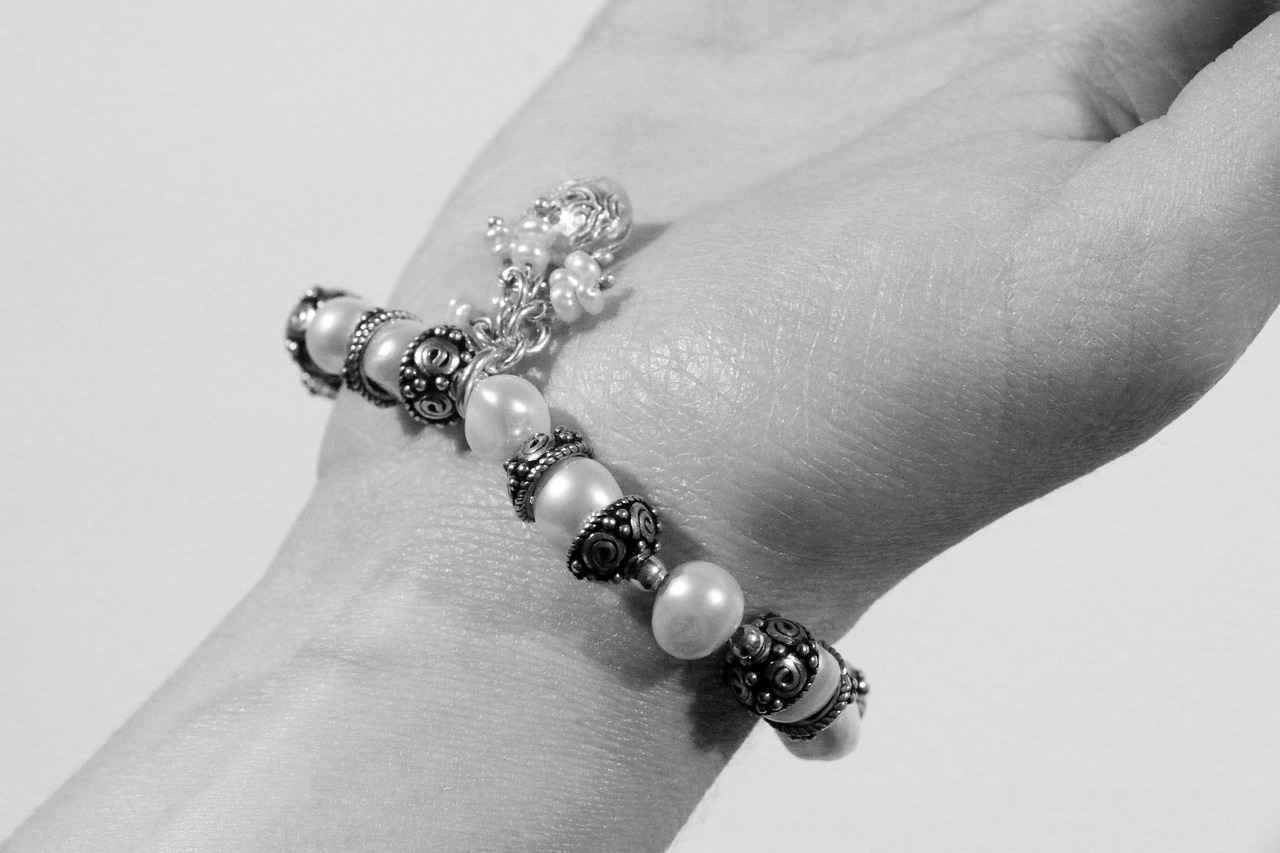
What Trends Are Influencing Custom Jewelry Designs?
In today’s fast-paced world, the realm of custom jewelry design is being shaped by a myriad of trends that reflect both cultural movements and individual expressions. As consumers increasingly seek pieces that resonate with their personal stories, the influence of current fashion and design trends has never been more pronounced.
How Are Eco-Friendly Materials Being Integrated?
One of the most significant trends in the jewelry industry is the shift towards sustainability. Eco-friendly materials are becoming increasingly popular as designers strive to create pieces that not only look beautiful but also have a minimal environmental impact. This includes the use of recycled metals, ethically sourced gemstones, and sustainable packaging. By opting for these materials, consumers can express their style while also making a positive contribution to the planet.
What Role Do Cultural Influences Play?
Cultural motifs and symbols are gaining prominence in custom jewelry designs, allowing individuals to celebrate their heritage. From intricate patterns inspired by traditional art forms to the incorporation of symbols that hold personal significance, these designs serve as a powerful medium for storytelling. This trend reflects a broader cultural movement where personal identity and heritage are celebrated through unique jewelry pieces.
How Are Technology and Innovation Shaping Designs?
Advancements in technology are also playing a crucial role in shaping custom jewelry. The rise of 3D printing has revolutionized the design process, allowing for intricate and complex designs that were previously unattainable. This technology enables designers to experiment with shapes and forms, pushing the boundaries of creativity. Furthermore, digital platforms allow customers to visualize their designs in real-time, enhancing the customization experience.
What Are the Key Aesthetic Trends?
Current aesthetic trends in custom jewelry often combine minimalism with bold statements. Many consumers are gravitating towards pieces that feature clean lines and geometric shapes, which offer a modern and sophisticated look. At the same time, there is a growing appreciation for statement pieces that incorporate vibrant colors and unique textures, allowing wearers to express their individuality.
How Is Personalization Enhancing Consumer Experience?
Personalization remains at the forefront of custom jewelry design. Consumers are increasingly seeking pieces that reflect their unique stories, emotions, and milestones. This trend has led to the popularity of engraving, birthstones, and other personalized elements that add a meaningful touch to each piece. By offering customization options, designers can create jewelry that resonates deeply with the wearer, making it not just an accessory but a cherished keepsake.
What Is the Impact of Social Media on Jewelry Trends?
Social media platforms have become powerful tools for influencing jewelry trends. With platforms like Instagram and Pinterest showcasing the latest styles and designs, consumers are more informed and inspired than ever. Influencers and celebrities often set trends by sharing their favorite custom pieces, driving demand for similar styles. This visibility allows for a greater appreciation of artisanal craftsmanship and encourages consumers to seek out unique, custom-made items.
How Are Gender Norms Evolving in Jewelry Design?
The evolution of gender norms is also impacting custom jewelry designs. Traditionally, jewelry was often categorized as masculine or feminine, but this distinction is blurring. Designers are increasingly creating pieces that are unisex, allowing individuals to express their style regardless of traditional gender expectations. This shift is empowering consumers to choose jewelry that resonates with their personal identity rather than societal norms.
In conclusion, the landscape of custom jewelry design is continuously evolving, driven by trends that reflect broader cultural movements and individual expressions. From sustainable practices to technological innovations, these influences are shaping the future of jewelry, making it more personal, meaningful, and aligned with contemporary values.
How Are Eco-Friendly Materials Being Integrated?
The jewelry industry is witnessing a significant transformation as sustainability becomes a priority for both designers and consumers. Eco-friendly materials are increasingly integrated into custom jewelry, reflecting a broader shift towards responsible consumption. This article delves into how these materials are being utilized, the benefits they offer, and what consumers should look for when choosing sustainable options.
Eco-friendly materials refer to substances that are sourced or manufactured in ways that minimize environmental impact. These materials include:
- Recycled Metals: Gold, silver, and platinum can be reclaimed from old jewelry and electronic waste, reducing the need for new mining.
- Ethically Sourced Gemstones: Gemstones that are mined under fair labor practices and without causing significant environmental damage.
- Lab-Created Stones: These stones are produced in controlled environments, often with less environmental impact and ethical concerns compared to traditional mining.
- Natural Materials: Organic materials like wood, bone, or shells that are sustainably harvested.
Opting for eco-friendly jewelry is not just a trend; it’s a commitment to sustainability. Here are some compelling reasons to consider:
- Environmental Impact: Using recycled and sustainably sourced materials helps reduce waste and pollution associated with mining and manufacturing.
- Support for Ethical Practices: Choosing ethically sourced gemstones supports fair labor practices and helps communities thrive.
- Unique Designs: Eco-friendly materials often lead to unique and innovative designs, allowing for greater creativity in custom pieces.
Designers are increasingly embracing sustainable practices in various ways:
- Material Sourcing: Many designers now prioritize sourcing materials from suppliers who adhere to ethical and sustainable practices.
- Reducing Waste: Designers are adopting techniques that minimize waste during the production process, such as using computer-aided design (CAD) to optimize material usage.
- Transparency: Many brands are now transparent about their sourcing and manufacturing processes, allowing consumers to make informed choices.
When shopping for eco-friendly jewelry, consumers should consider the following:
- Certification: Look for certifications from reputable organizations that verify the ethical sourcing of materials.
- Designer’s Commitment: Research the designer’s commitment to sustainability, including their sourcing practices and production methods.
- Material Composition: Ask about the materials used in the jewelry to ensure they align with your values regarding sustainability.
As awareness of environmental issues continues to grow, the demand for eco-friendly jewelry is expected to rise. Designers will likely innovate further, creating beautiful pieces that not only appeal to consumers aesthetically but also align with their ethical values. The integration of sustainable practices in jewelry design is not just a passing trend; it represents a fundamental shift towards a more responsible and conscientious industry.
In conclusion, eco-friendly materials are becoming a cornerstone of custom jewelry design, offering consumers a chance to express their individuality while making a positive impact on the environment. By choosing sustainable options, consumers can enjoy unique, beautiful pieces that tell a story of care and responsibility.
What Role Do Cultural Influences Play?
In the realm of custom-made jewelry, cultural influences play a significant role in shaping designs that resonate deeply with individuals. By incorporating cultural motifs and symbols, artisans create pieces that not only reflect personal stories but also celebrate heritage and identity. This trend is increasingly popular as consumers seek to express their uniqueness through jewelry that holds personal significance.
Cultural symbols often carry profound meanings and histories. When integrated into jewelry, they allow wearers to showcase their roots and convey messages that are important to them. For instance, a piece featuring a tribal pattern may signify a connection to one’s ancestry, while a design incorporating a national emblem might express pride in one’s country. This personalization transforms jewelry from mere adornment into a powerful medium of self-expression.
Jewelry designers often draw inspiration from various cultural backgrounds, utilizing traditional techniques and materials to create authentic pieces. For example, artisans might use handcrafted techniques passed down through generations, ensuring that each piece is not only unique but also rooted in cultural practices. Additionally, designers may collaborate with cultural experts to ensure accurate representation and respect for the symbols being used.
- Native American Designs: Often feature intricate beadwork and symbols that represent nature and spirituality.
- Asian Influences: Incorporate motifs like dragons, lotus flowers, and jade, each symbolizing different virtues and beliefs.
- African Patterns: Use vibrant colors and geometric shapes that reflect the diversity of the continent’s cultures.
- European Heritage: May include Celtic knots or family crests that signify lineage and history.
Wearing jewelry that incorporates cultural symbols can enhance personal identity by serving as a daily reminder of one’s heritage. For many, these pieces become a source of pride and a way to connect with their roots. Additionally, cultural jewelry can foster a sense of community, as individuals who share similar backgrounds can recognize and appreciate the symbols represented in each other’s pieces.
When selecting cultural jewelry, it is essential to consider the authenticity and significance of the symbols. Researching the meanings behind various motifs can help ensure that the piece resonates with your personal story. Moreover, choosing a designer who respects and understands the cultural context of the symbols will enhance the integrity of the piece.
As cultural appropriation becomes a critical topic in the fashion and jewelry industries, it is vital to approach cultural jewelry with sensitivity. Designers should strive to honor the cultures they draw inspiration from, avoiding the commercialization of sacred symbols. Collaborating with members of the culture can ensure that designs are respectful and authentic, promoting a more inclusive approach to jewelry making.
In conclusion, the integration of cultural motifs and symbols into custom-made jewelry not only allows for personal storytelling but also fosters a deeper connection to heritage. As consumers become more aware of the significance behind these designs, the demand for culturally inspired pieces continues to grow, making it an exciting time for both designers and wearers alike.
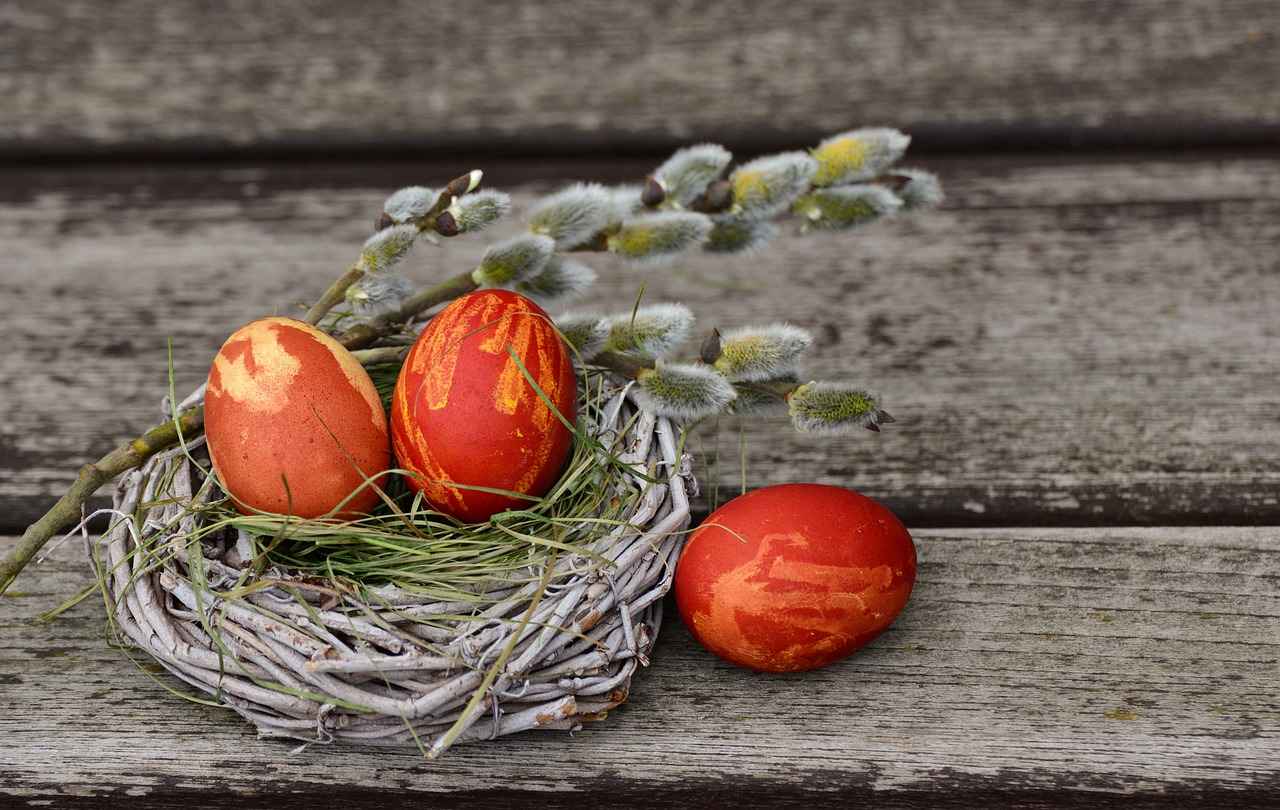
How to Care for Your Custom-Made Jewelry?
Custom-made jewelry is not just a beautiful accessory; it represents a significant investment and personal expression. To ensure that your unique pieces maintain their beauty and longevity, proper care is essential. By understanding the best practices for maintaining your jewelry, you can preserve its value and appearance for years to come.
Custom jewelry often features unique designs and materials that require special attention. Regular care helps prevent damage, tarnishing, and loss of brilliance. Additionally, maintaining your jewelry can enhance its emotional value, as these pieces often hold personal significance.
- Gentle Cleaning: Use a soft, lint-free cloth to wipe down your jewelry after each wear. This simple step removes oils and dirt that can accumulate over time.
- Soapy Water: For deeper cleaning, mix a few drops of mild soap with warm water. Soak your jewelry briefly and gently scrub with a soft brush, then rinse and dry thoroughly.
- Avoid Harsh Chemicals: Stay away from abrasive cleaners and chemical solutions, as they can damage delicate materials and finishes.
Proper storage is crucial in preventing scratches and tarnishing. Here are some tips:
- Use a Jewelry Box: Store your pieces in a fabric-lined jewelry box to protect them from dust and scratches.
- Separate Pieces: Keep different items apart to avoid tangling and scratching. Use individual compartments or pouches for each piece.
- Cool, Dry Place: Store your jewelry in a cool, dry environment. Avoid areas with high humidity, such as bathrooms, which can accelerate tarnishing.
To maintain the integrity of your custom pieces, avoid the following:
- Exposure to Chemicals: Keep your jewelry away from harsh chemicals, such as bleach or chlorine, which can cause irreversible damage.
- Wearing During Activities: Remove jewelry before engaging in physical activities, swimming, or cleaning to prevent scratches and damage.
- Ignoring Repairs: Address any loose stones or damaged settings promptly. Ignoring these issues can lead to more significant problems down the line.
Frequency of cleaning depends on how often you wear your pieces. As a general rule:
- Daily Wear: Clean your jewelry every few weeks to keep it looking its best.
- Occasional Wear: For pieces worn infrequently, a thorough cleaning before and after use is usually sufficient.
If your jewelry requires extensive cleaning, repair, or restoration, consider consulting a professional jeweler. They have the expertise and tools necessary to handle delicate and intricate pieces safely.
In summary, caring for your custom-made jewelry involves regular cleaning, safe storage, and mindful usage. By following these best practices, you can ensure that your unique pieces remain stunning and cherished for years to come.
What Cleaning Methods Are Recommended?
When it comes to maintaining the beauty and longevity of your custom-made jewelry, proper care is essential. Jewelry can be a significant investment, both financially and emotionally, so understanding the best cleaning methods is crucial. In this section, we will explore the recommended cleaning techniques that ensure your pieces remain stunning without risking damage to delicate materials.
To keep your jewelry looking its best, consider the following gentle cleaning methods:
- Soft Cloth Cleaning: Regularly wiping your jewelry with a soft, lint-free cloth can remove dirt and oils that accumulate from daily wear. This simple method is effective for all types of jewelry, including those with delicate finishes.
- Mild Soap Solution: For a deeper clean, mix a few drops of mild dish soap with warm water. Soak your jewelry briefly, then use a soft brush, like a toothbrush, to gently scrub intricate areas. Rinse thoroughly with clean water and dry with a soft cloth.
- Ultrasonic Cleaners: While these devices can be effective for cleaning jewelry, they should be used with caution. Ensure your pieces are suitable for ultrasonic cleaning, as some gemstones and settings may be damaged by the vibrations.
- Professional Cleaning: For valuable or antique pieces, consider taking your jewelry to a professional jeweler for cleaning and maintenance. They have specialized tools and techniques to restore your items without risking damage.
While cleaning your jewelry is important, it’s equally vital to know what to avoid:
- Abrasive Cleaners: Never use harsh chemicals or abrasive materials, as they can scratch or dull the surface of your jewelry.
- Extreme Temperatures: Avoid exposing your jewelry to extreme heat or cold, as this can cause materials to expand or contract, potentially leading to damage.
- Soaking for Too Long: When using a soap solution, do not soak your jewelry for extended periods. A few minutes is generally sufficient to loosen dirt without risking damage.
In addition to cleaning, proper storage is crucial for maintaining the quality of your jewelry. Here are some tips:
- Use a Jewelry Box: Store your pieces in a fabric-lined jewelry box to prevent scratches and tangling. Separate compartments are ideal for keeping items organized.
- Avoid Moisture: Keep your jewelry in a cool, dry place, as moisture can lead to tarnishing and deterioration of materials.
- Regular Inspections: Periodically check your jewelry for any signs of wear or damage. Early detection can prevent further issues and costly repairs.
By following these cleaning and storage methods, you can ensure that your custom-made jewelry remains as beautiful and meaningful as the day you received it. Remember, taking the time to care for your jewelry not only preserves its appearance but also enhances its sentimental value over time.
How to Store Custom Jewelry Safely?
When it comes to preserving the beauty and integrity of your custom jewelry, proper storage is essential. Jewelry pieces, especially those that are custom-made, can be delicate and susceptible to damage if not cared for correctly. In this section, we will explore the best practices for storing your custom jewelry safely, ensuring that it remains in pristine condition for years to come.
Jewelry can be easily damaged by environmental factors, such as moisture and heat, as well as physical impacts, such as scratches and tangling. By implementing effective storage solutions, you can protect your cherished pieces from these risks. Proper storage not only helps maintain the aesthetic appeal of your jewelry but also preserves its value over time.
- Choose the Right Location: Store your jewelry in a cool, dry place. Avoid areas with high humidity, such as bathrooms, as moisture can lead to tarnishing and corrosion.
- Use a Fabric-Lined Box: A fabric-lined jewelry box is ideal for keeping your pieces safe from scratches. The soft material prevents direct contact between items, reducing the risk of damage.
- Separate Pieces: To avoid scratches and tangling, store each piece of jewelry separately. Use individual compartments or small pouches to keep necklaces, rings, and earrings apart.
- Consider Anti-Tarnish Solutions: For silver jewelry, consider using anti-tarnish strips or cloths in your storage box. These products can help prevent tarnishing, keeping your pieces looking their best.
Organizing your jewelry collection can make it easier to find and enjoy your pieces. Here are some tips:
- Inventory Your Collection: Keep a detailed inventory of your jewelry, including descriptions, materials, and any special care instructions.
- Use Labels: Label compartments or drawers to quickly identify the contents. This will save you time and help you avoid unnecessary handling of your pieces.
- Avoid Storing in Direct Sunlight: Exposure to sunlight can fade gemstones and damage certain materials. Always store your jewelry in a dark place.
- Do Not Overcrowd Storage: Overcrowding can lead to tangling and scratching. Ensure there is enough space for each piece to be stored safely.
In addition to proper storage, regular maintenance is crucial. Here are some care tips:
- Clean Before Storing: Always clean your jewelry before putting it away. Use a soft cloth to remove dirt and oils, which can cause damage over time.
- Check for Damage: Regularly inspect your jewelry for any signs of wear or damage. Early detection can prevent further issues.
By implementing these effective storage practices, you can ensure that your custom jewelry remains in excellent condition, ready to be worn and admired whenever you choose. Remember, taking the time to properly care for your jewelry is an investment in its longevity and beauty.
Frequently Asked Questions
- What is custom-made jewelry?
Custom-made jewelry is unique pieces designed specifically for an individual, reflecting their personal style and preferences. Unlike mass-produced items, these pieces are crafted with attention to detail and quality.
- How long does the custom jewelry design process take?
The design process can vary depending on complexity, but typically it ranges from a few weeks to a couple of months. Factors like communication with the designer and the number of revisions can affect the timeline.
- Can I provide my own materials for custom jewelry?
Absolutely! Many designers are open to using materials you provide, such as gemstones or metals, which can add a personal touch to your piece.
- Is custom jewelry more expensive than regular jewelry?
While custom pieces can sometimes be pricier due to the craftsmanship involved, they often represent better value over time since they are unique and can be made with high-quality materials.
- How do I maintain my custom-made jewelry?
To keep your custom jewelry looking its best, clean it gently with a soft cloth and mild soap. Store it in a cool, dry place, preferably in a fabric-lined box to prevent scratches.

